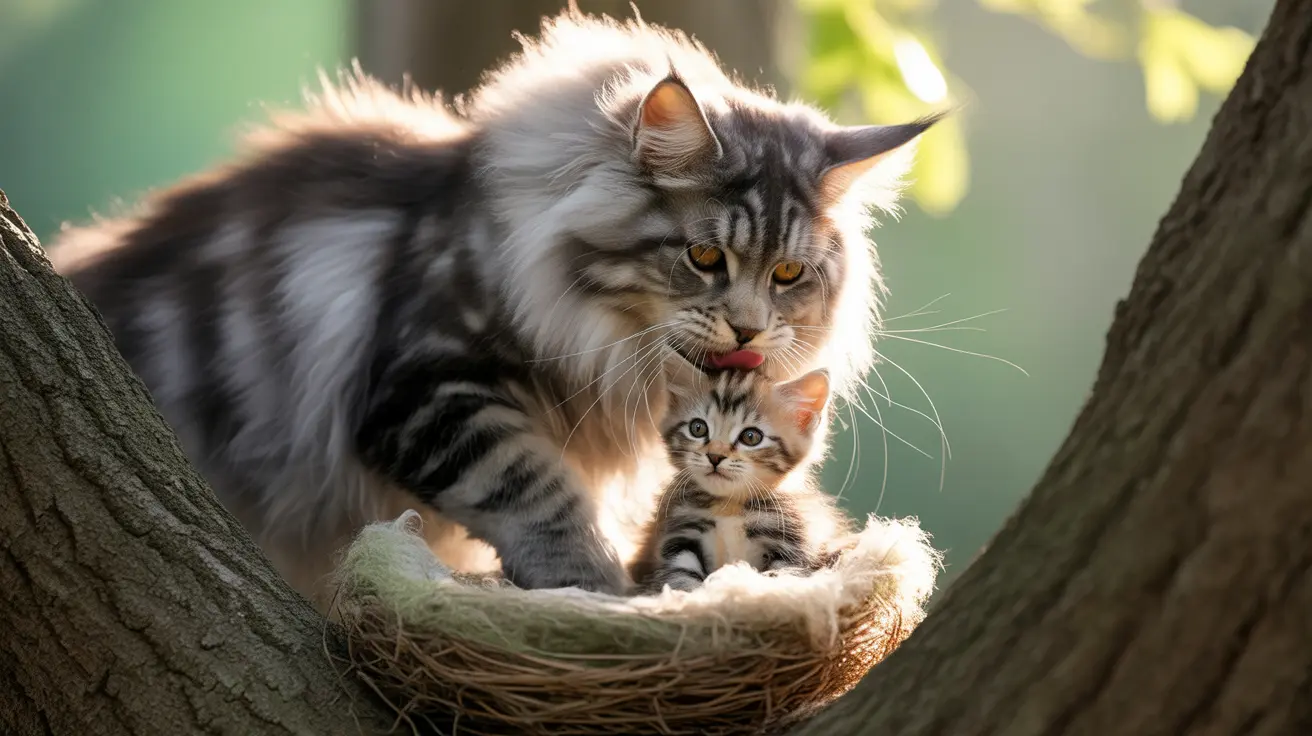Mother cats are remarkable creatures with powerful maternal instincts that drive them to protect and care for their offspring. One of the most fascinating behaviors they exhibit is relocating their kittens to different locations. This natural behavior, deeply rooted in their wild ancestry, serves multiple crucial purposes for the survival and well-being of their young.
Understanding why cats move their kittens can help pet owners better support their feline companions during the critical early weeks of kitten development. Let's explore the various reasons behind this instinctive behavior and learn how to create an optimal environment for mother cats and their precious offspring.
The Primary Instinct: Protection from Predators
The fundamental reason why mother cats move their kittens is rooted in their evolutionary need to protect their offspring from predators. Even in the safety of our homes, this instinct remains strong. Mother cats will regularly relocate their kittens to reduce scent trails that could attract potential threats and to ensure their babies remain hidden from view.
This protective behavior is so deeply ingrained that even indoor cats with no real threats will exhibit this same pattern, demonstrating the power of their natural instincts.
Environmental Factors That Trigger Relocation
Temperature and Comfort
Mother cats are extremely sensitive to environmental conditions that might affect their kittens' well-being. During the first 45 days of life, kittens cannot regulate their own body temperature, making them vulnerable to both heat and cold. A mother cat will move her kittens if their current location becomes too warm or too cool, seeking the perfect spot for their comfort and survival.
Noise and Disturbance
Excessive noise, household activity, or frequent disturbances can prompt a mother cat to relocate her kittens. Common triggers include:
- Loud television or music
- Children playing nearby
- Construction or renovation work
- Other pets in the household
- Too much attention from humans
Maternal Care and Hygiene
Cleanliness is a top priority for mother cats. They will move their kittens if the nesting area becomes soiled or damp, as these conditions can lead to health issues. This behavior helps prevent infections and ensures the kittens remain in a sanitary environment as they develop.
Space Requirements and Growth
As kittens grow larger and become more active, their space needs change. A mother cat may relocate her litter to a more spacious area that better accommodates their increasing size and mobility. This ensures each kitten has adequate room to nurse, play, and develop important motor skills.
Supporting Mother Cats During Kitten Care
To help mother cats feel secure and reduce unnecessary kitten relocation, consider these important steps:
- Provide multiple quiet, private nesting options
- Maintain consistent room temperature
- Minimize household disturbances
- Respect the mother cat's space
- Keep the nesting area clean without using strong-smelling products
Frequently Asked Questions
Why do mother cats move their kittens from one location to another?
Mother cats move their kittens to protect them from perceived threats, maintain optimal temperature conditions, ensure cleanliness, and provide adequate space as the kittens grow. This behavior is driven by powerful maternal instincts that help ensure kitten survival.
How can I tell if it's normal when my cat moves her kittens frequently?
Normal relocation behavior involves careful, deliberate movements to safer or more suitable locations. However, if a mother cat seems anxious, moves kittens frantically, or appears to neglect them during frequent moves, consult a veterinarian.
What are the main reasons a cat moves her kittens one at a time?
Moving kittens individually allows the mother to maintain better control and safety. This method helps her assess the new location's security while keeping the rest of the litter protected, and reduces the risk of drawing attention to the entire group.
How can I support my cat to keep her kittens safe and comfortable?
Provide quiet, warm, and private nesting areas, maintain consistent room temperature, minimize disturbances, and ensure easy access to food, water, and a litter box nearby. Avoid handling kittens excessively during their first few weeks.
Does too much noise or human attention cause a mother cat to move her kittens?
Yes, excessive noise and human attention can stress a mother cat, causing her to relocate her kittens to a quieter, more private location. It's important to give the mother cat adequate space and minimize disruptions during the early weeks of kitten care.
Understanding and respecting a mother cat's natural instincts to move and protect her kittens helps ensure the best possible start for these tiny felines. By providing appropriate support and maintaining a calm environment, we can help mother cats feel secure and confident in caring for their precious offspring.






